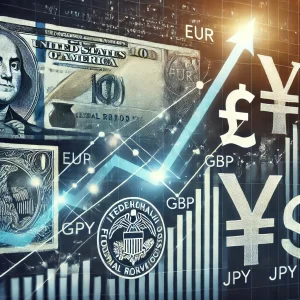Introduction
In the dynamic world of forex trading, understanding market sentiment and trader positioning is crucial. The Commitment of Traders (COT) report, released weekly by the Commodity Futures Trading Commission (CFTC), provides valuable insights into these aspects. The latest COT report reveals a significant shift in trader positions, with both EUR/USD and AUD/USD traders flipping to net-long exposure. This article delves into the details of this shift, its implications for the forex market, and the broader economic context influencing these moves.
Understanding The COT Report
The COT report is a vital tool for traders, providing a breakdown of the aggregate positions held by different types of traders in futures markets. It categorizes traders into three main groups: commercial traders (hedgers), non-commercial traders (speculators), and non-reportable traders. Speculators, who include hedge funds and other large entities, are particularly noteworthy because their positions can indicate broader market sentiment and potential future price movements.
Recent Trends In EUR/USD And AUD/USD
The latest COT report highlights a notable change in trader sentiment towards EUR/USD and AUD/USD pairs. Speculators have shifted to net-long positions, indicating a growing optimism about the future performance of these currencies against the US dollar. This shift comes amid various economic factors and geopolitical developments that are reshaping the forex landscape.
Factors Driving The Shift
Several key factors have contributed to the shift in trader positions on EUR/USD and AUD/USD:
Economic Divergence: The Eurozone has shown signs of economic recovery, with improving GDP growth rates and decreasing unemployment. In contrast, the US economy has faced challenges, including higher inflation and concerns about the sustainability of its growth trajectory. Australia has benefited from rising commodity prices, particularly iron ore and coal, which are significant exports. This has bolstered the Australian dollar’s attractiveness relative to the US dollar.
Central Bank Policies: The European Central Bank (ECB) has maintained a dovish stance, supporting economic growth with low interest rates and asset purchases. However, recent signals suggest a potential shift towards tightening, which has boosted the euro. The Reserve Bank of Australia (RBA) has also indicated a cautious approach to monetary tightening, balancing the need to support growth while addressing inflation concerns.
Geopolitical Stability: Europe has managed to navigate recent geopolitical challenges, including tensions in Eastern Europe, without significant economic disruptions. This stability has increased confidence in the euro. Australia’s strategic position in the Asia-Pacific region, coupled with strong trade relationships with China, has supported the Australian dollar.
Implications For Forex Traders
The shift to net-long positions on EUR/USD and AUD/USD suggests that traders are betting on further appreciation of these currencies against the US dollar. This sentiment is likely driven by the factors mentioned above, and it has several implications for forex traders:
Trading Strategies: Traders may adopt long positions on EUR/USD and AUD/USD, anticipating further gains. This can be executed through spot forex trades, futures contracts, or options. Hedging strategies may also be adjusted to account for the expected appreciation of these currencies.
Market Volatility: The shift in trader positions can increase market volatility, particularly if economic data releases or central bank announcements deviate from expectations. Traders should be prepared for potential price swings and adjust their risk management strategies accordingly.
Broader Market Impact: The strength of the euro and the Australian dollar can influence other currency pairs and global financial markets. For instance, a stronger euro could impact trade balances within the Eurozone, while a robust Australian dollar might affect commodity markets.
Broader Economic Context
The shifts in trader positions on EUR/USD and AUD/USD are occurring within a broader economic context marked by several key trends:
Inflation Concerns: Inflation remains a critical concern for central banks globally. In the US, persistent inflation has raised questions about the Federal Reserve’s policy path. Higher inflation could undermine the US dollar’s value, making other currencies more attractive.
Global Supply Chains: Disruptions in global supply chains, exacerbated by geopolitical tensions and the COVID-19 pandemic, continue to influence currency markets. Countries with resilient supply chains and robust export sectors, such as Germany and Australia, are likely to see their currencies benefit.
Environmental Policies: Increasing emphasis on environmental policies and sustainable growth is shaping economic strategies worldwide. Countries leading in green technology and sustainable practices may attract more investment, supporting their currencies.
Conclusion
The latest COT report’s revelation of a shift to net-long positions on EUR/USD and AUD/USD highlights the evolving dynamics in the forex market. Driven by economic divergence, central bank policies, and geopolitical stability, this shift underscores the importance of staying informed about market sentiment and broader economic trends.
Forex traders should consider these factors in their strategies, preparing for potential volatility and adjusting their positions to capitalize on emerging opportunities. By understanding the drivers behind these shifts and their implications, traders can better navigate the complex and ever-changing forex market, positioning themselves for success in the months ahead.



